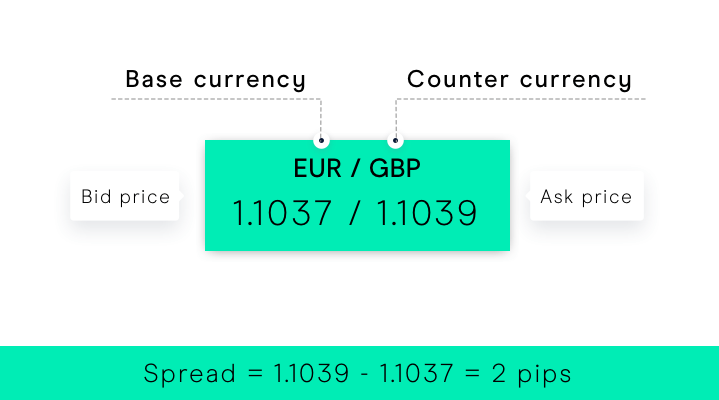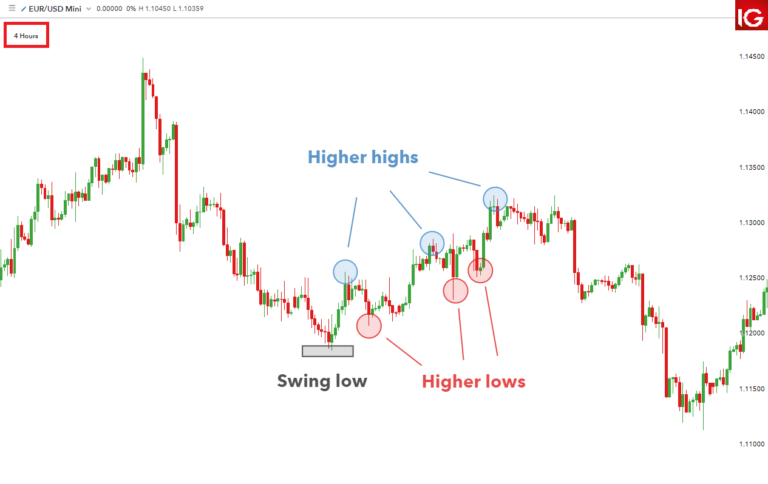Introduction
Forex trading, with its potential for high returns and rapid fluctuations, can be both exhilarating and daunting. As traders navigate the dynamic currency markets, one concept that stands out as a pillar of prudent risk management is diversification. In this article, we’ll explore the concept in forex trading, its importance, benefits, strategies, and how it contributes to long-term success.
Understanding the Concept of Diversification
Diversification is a risk management strategy that involves spreading investments across different assets or markets to reduce exposure to any single risk or event. In the context of forex trading, diversification means not relying solely on one currency pair or trading strategy but rather diversifying across multiple currency pairs, asset classes, or trading strategies. By diversifying, traders aim to minimize the impact of adverse market movements on their overall portfolio and increase the probability of achieving consistent returns over time.
The Importance in Forex Trading
The Importance of Diversification in Forex Trading
In the fast-paced and ever-changing landscape of forex trading, diversification emerges as a fundamental principle for safeguarding capital and achieving long-term success. The inherent volatility and unpredictability of currency markets underscore the critical importance of diversification as a risk management strategy.
Forex markets are notoriously dynamic, with prices fluctuating rapidly in response to a myriad of factors such as economic data releases, geopolitical events, central bank decisions, and market sentiment. While certain currency pairs may exhibit strong trends or favorable trading conditions at times, these conditions can shift suddenly and unexpectedly, catching traders off guard and leading to significant losses.
By diversifying their trading activities, traders aim to spread their risk across multiple currency pairs, asset classes, or trading strategies. This approach helps mitigate the impact of adverse market movements on their overall portfolio and protects against the risk of being overly exposed to any single currency pair or market condition.
For example, imagine a scenario where a trader heavily invests in a single currency pair based on a strong trend, only to see that trend reverse suddenly due to an unexpected economic announcement, the trader’s entire capital may be at risk, leading to significant drawdowns and potentially wiping out their trading account.
It offers a protective shield against such scenarios by ensuring that losses in one area of the portfolio can be offset by gains in another. By spreading their risk across different assets or markets, traders reduce their vulnerability to individual risks and increase the likelihood of achieving consistent returns over time.
Moreover, promotes stability and resilience in the face of changing market conditions. While certain currency pairs may experience heightened volatility or adverse trends, others may remain relatively stable or exhibit favorable trading opportunities. By diversifying their trading activities, traders can capitalize on a broader range of market conditions and adapt to shifting dynamics more effectively.
In essence, it is not just a prudent risk management strategy; it’s a cornerstone of long-term success. By spreading risk across multiple currency pairs, asset classes, or trading strategies, traders can protect their capital, enhance stability, and increase their chances of achieving sustainable profitability in the dynamic and unpredictable world of currency trading.
Benefits of Diversification in Forex Trading
There are several benefits to diversification in forex trading:
Diversification is not just a risk management strategy; it’s a powerful tool that offers a multitude of benefits to forex traders. Let’s explore some of the key advantages of diversification in forex trading:
- Risk Reduction: Diversification spreads risk across different assets or markets, reducing the impact of adverse events or market movements on the overall portfolio. By not putting all their eggs in one basket, traders can protect themselves from the devastating effects of significant losses in any single currency pair or market condition.
- Increased Consistency: Diversification can lead to more consistent returns over time. Losses in one area of the portfolio may be offset by gains in another, smoothing out the overall performance and reducing the volatility of returns. This consistency is crucial for maintaining confidence and discipline during periods of market turbulence.
- Opportunity for Growth: Diversifying across multiple currency pairs or trading strategies exposes traders to a broader range of market opportunities, increasing the potential for profit. While certain currency pairs may experience unfavorable conditions, others may present lucrative trading setups. By diversifying, traders can capitalize on diverse market dynamics and unlock new avenues for growth.
- Enhanced Stability: A diversified portfolio is less susceptible to the volatility of individual currency pairs or market conditions, resulting in a more stable trading performance. Even if one currency pair experiences significant price fluctuations, the overall impact on the portfolio is mitigated by the presence of other assets or strategies. This stability provides traders with peace of mind and allows them to maintain a long-term perspective on their trading goals.
In summary, diversification offers a multitude of benefits to forex traders, including risk reduction, increased consistency, opportunities for growth, and enhanced stability. By spreading risk across different assets or markets, traders can protect their capital, smooth out their trading performance, and increase their chances of achieving sustainable profitability in the dynamic and unpredictable world of forex trading.
How to Diversify Your Forex Trading Portfolio
Diversifying your forex trading portfolio is a crucial step towards mitigating risk and enhancing your chances of long-term success. Here are some effective strategies for achieving diversification in your forex trading activities:
- Currency Pair Diversification: Spread your trading capital across multiple currency pairs to reduce reliance on any single pair and capture opportunities in different market conditions. Focus on including major, minor, and exotic currency pairs in your portfolio to diversify across different regions and economic factors. By diversifying across currency pairs, you can minimize the impact of adverse movements in any single pair and take advantage of diverse trading opportunities.
- Asset Class Diversification: Consider diversifying into other asset classes such as commodities, stocks, or cryptocurrencies to spread risk across different markets and instruments. While forex trading offers ample opportunities for profit, diversifying into other asset classes can provide additional sources of income and hedge against currency-specific risks. Allocate a portion of your trading capital to assets that exhibit low correlation with currency markets to further enhance diversification benefits.
- Strategy Diversification: Employ multiple trading strategies with different risk profiles and time horizons to balance out the strengths and weaknesses of individual approaches. Experiment with trend-following, range trading, breakout trading, and other strategies to diversify your trading activities and adapt to diverse market conditions. By combining complementary strategies, you can optimize risk-adjusted returns and increase the resilience of your trading portfolio.
- Timeframe Diversification: Trade across different timeframes, such as short-term intraday trading and longer-term swing trading, to capture opportunities in varying market environments. Short-term trading strategies may capitalize on intraday price movements and volatility, while longer-term strategies focus on capturing larger trends and fundamental shifts in market sentiment. By diversifying across timeframes, you can exploit opportunities in both fast-paced and slower-moving markets and adapt to changing trading conditions.
Implementing these diversification strategies requires careful planning, research, and risk management. Monitor the performance of different currency pairs, asset classes, and trading strategies, and adjust your portfolio allocation as needed to optimize risk-adjusted returns. Remember to maintain discipline and consistency in your trading approach, and always prioritize capital preservation and long-term profitability. With a diversified trading portfolio, you can navigate the complexities of the forex market with confidence and increase your chances of achieving sustainable success over time.
Popular Diversification Strategies in Forex Trading
Some popular diversification strategies in forex trading include:
- Correlation-Based Diversification: Select currency pairs that have low or negative correlations to reduce overall portfolio risk. For example, pairing major currency pairs with emerging market currencies.
- Sector-Based Diversification: Diversify across different sectors of the forex market, such as major, minor, and exotic currency pairs, to spread risk across diverse market segments.
- Risk-Adjusted Diversification: Allocate capital based on the risk profile of each currency pair or trading strategy, with higher-risk assets receiving smaller allocations to mitigate overall portfolio risk.
Risk Management and Diversification
Risk management and diversification are two sides of the same coin in forex trading, each playing a crucial role in protecting capital and ensuring long-term profitability. Let’s delve deeper into how these concepts are intertwined and how traders can effectively utilize them to mitigate risk and optimize their chances of success:
- Diversification Spreads Risk: Diversification involves spreading risk across different assets or markets to reduce reliance on any single investment. By diversifying their trading activities across multiple currency pairs, asset classes, or trading strategies, traders can minimize the impact of adverse market movements on their overall portfolio. Diversification helps ensure that losses in one area of the portfolio can be offset by gains in another, providing a buffer against unexpected market fluctuations.
- Risk Management Enhances Diversification: Effective risk management is essential for optimizing the benefits of diversification. Traders must set appropriate position sizes relative to their account size and risk tolerance to ensure that no single trade or investment poses a significant threat to their capital. Additionally, using stop-loss orders helps limit potential losses on individual trades, preventing catastrophic drawdowns that could derail their trading career. Adhering to disciplined trading plans and strategies further reinforces risk management practices, ensuring that traders maintain a consistent approach to managing risk across their diversified portfolio.
- Combining Diversification with Robust Risk Management: By combining diversification with robust risk management practices, traders can create a well-rounded approach to managing risk in forex trading. Diversification spreads risk across different assets, markets, and strategies, while risk management techniques such as position sizing and stop-loss orders help control the magnitude of potential losses. Together, these strategies work synergistically to protect capital and optimize risk-adjusted returns.
- Protecting Capital and Optimizing Long-Term Success: Ultimately, the goal of combining diversification and risk management is to protect capital and optimize the chances of long-term success in forex trading. By diversifying their trading activities and implementing effective risk management practices, traders can navigate the inherent uncertainties of the forex market with confidence. This approach allows traders to weather market fluctuations, adapt to changing conditions, and sustain profitability over the long term.
In conclusion, diversification and risk management are integral components of a successful trading strategy in forex trading. By spreading risk across different assets or markets and implementing robust risk management techniques, traders can protect their capital, minimize losses, and increase their chances of achieving sustainable profitability over time. By adopting a disciplined and prudent approach to risk management and diversification, traders can navigate the complexities of the forex market with resilience and confidence.
Tools and Resources for Diversification in Forex Trading
Several tools and resources are available to help traders diversify their forex trading portfolios:
- Economic Calendars: Monitor economic events and data releases across different countries to identify trading opportunities in diverse currency pairs.
- Correlation Tables: Use correlation tables or matrices to assess the relationships between currency pairs and identify opportunities for correlation-based diversification.
- Trading Platforms: Choose trading platforms that offer access to a wide range of currency pairs, asset classes, and trading instruments to facilitate portfolio diversification.
Success Stories of Forex Traders Who Have Utilized Diversification
Success stories of forex traders who have utilized diversification serve as compelling examples of how this strategy can contribute to long-term success in the dynamic world of currency trading. Here are a few notable examples:
- George Soros: George Soros, one of the most famous forex traders of all time, is renowned for his successful bets against the British pound in 1992, a trade famously known as “Black Wednesday.” Soros’ success was not solely attributed to a single trade but rather to his diversified approach to trading. Soros managed the Quantum Fund, a hedge fund that employed a diversified portfolio of investments across various asset classes, including currencies, stocks, and commodities. By spreading risk across different markets and assets, Soros was able to capitalize on opportunities while minimizing potential losses.
- Paul Tudor Jones: Paul Tudor Jones is another legendary forex trader known for his successful macro trading strategies. Jones is a firm believer in diversification and risk management, emphasizing the importance of protecting capital and managing risk in trading. He diversified his trading activities across different markets, including currencies, bonds, stocks, and commodities, and utilized a variety of trading strategies to adapt to changing market conditions. Jones’ disciplined approach to risk management and diversification played a significant role in his long-term success as a trader.
- Retail Traders: While institutional traders like Soros and Jones often dominate the headlines, many retail traders have also achieved success through diversification. Retail traders who embrace diversification typically spread their trading activities across multiple currency pairs, asset classes, or trading strategies. By diversifying their portfolios, retail traders can mitigate the impact of adverse market movements and increase the likelihood of achieving consistent returns over time. Numerous success stories abound within the retail trading community, highlighting the effectiveness of diversification in managing risk and optimizing profitability.
In conclusion, diversification has been a common theme among successful forex traders, from institutional investors to retail traders. By spreading risk across different assets, markets, and strategies, these traders have been able to adapt to changing market conditions, navigate volatile environments, and achieve sustainable profitability in the long run. Whether trading on a large scale like Soros and Jones or as a retail trader, embracing diversification is a key component of a robust trading approach that prioritizes capital preservation and long-term success.
Conclusion: Embracing Diversification in Forex Trading for Long-Term Success
In conclusion, diversification is a fundamental principle of risk management in forex trading. By spreading risk across different assets, markets, and strategies, traders can reduce exposure to individual risks and increase the likelihood of achieving consistent returns over time. Whether you’re a novice trader or an experienced professional, embracing diversification in your forex trading portfolio can help protect your capital, enhance stability, and pave the way for long-term success in the dynamic world of currency trading.
Read our latest article on Risk Management
FAQs
- What is diversification in forex trading? Diversification in forex trading involves spreading investments across different assets, currency pairs, or trading strategies to reduce risk and increase the chances of long-term profitability.
- Why is diversification important in forex trading? Diversification is essential in forex trading because it helps traders mitigate the impact of adverse market movements, reduce reliance on any single currency pair, and protect their capital from significant losses.
- How does diversification help reduce risk in forex trading? Diversification spreads risk across different assets or markets, so losses in one area of the portfolio can be offset by gains in another, reducing the overall impact of adverse market movements.
- Can diversification lead to more consistent returns in forex trading? Yes, diversification can lead to more consistent returns over time. By spreading risk across different assets or strategies, traders can smooth out their trading performance and reduce the volatility of returns.
- What opportunities does diversification offer in forex trading? Diversification offers traders the opportunity to capitalize on a broader range of market conditions and trading opportunities. By diversifying across multiple currency pairs or strategies, traders can increase their potential for profit.
- How can traders diversify their forex trading portfolios? Traders can diversify their forex trading portfolios by spreading their capital across multiple currency pairs, asset classes, or trading strategies. They can also trade across different timeframes to capture opportunities in varying market environments.
- What role does risk management play in diversification? Risk management is closely intertwined with diversification in forex trading. Effective risk management involves setting appropriate position sizes, using stop-loss orders, and adhering to disciplined trading plans to protect capital and optimize long-term success.
- How can traders combine diversification with risk management? Traders can combine diversification with risk management by spreading risk across different assets or markets while also implementing robust risk management techniques such as position sizing and stop-loss orders to control potential losses.
- Can it benefit both institutional and retail forex traders? Yes, can benefit both institutional and retail forex traders. Institutional traders like hedge fund managers utilize to manage large portfolios, while retail traders spread risk across different currency pairs, asset classes, or strategies to protect their capital and increase profitability.
- Are there any successful forex traders who have utilized ? Yes, numerous successful forex traders, including institutional investors like George Soros and Paul Tudor Jones, as well as retail traders, have embraced as a key component of their trading approach and has helped these traders navigate volatile markets and achieve consistent returns over time.
Click here to read more on the Topic





